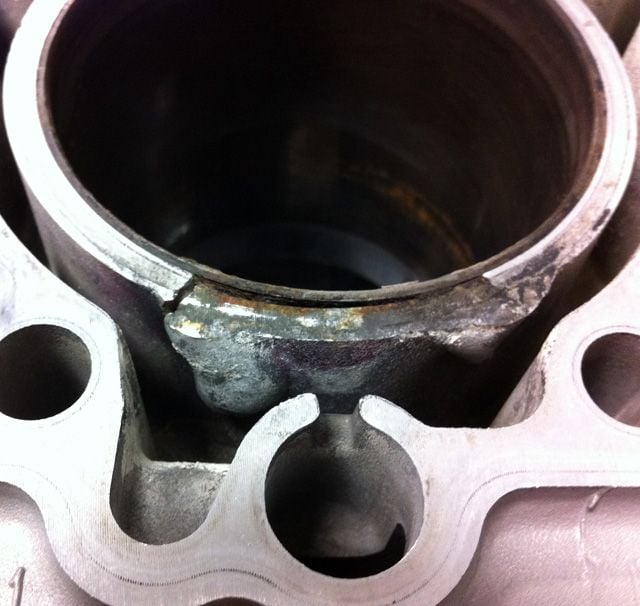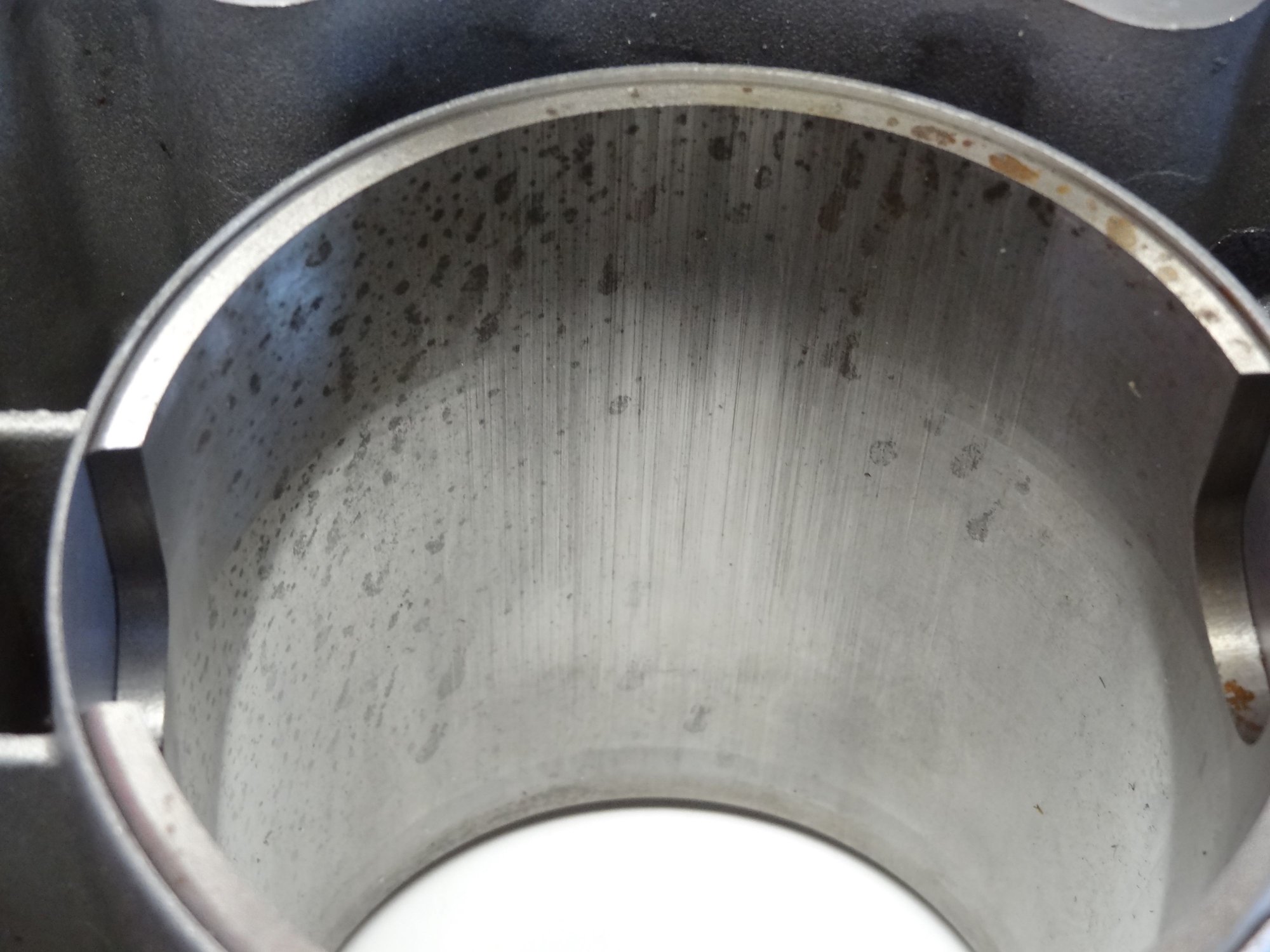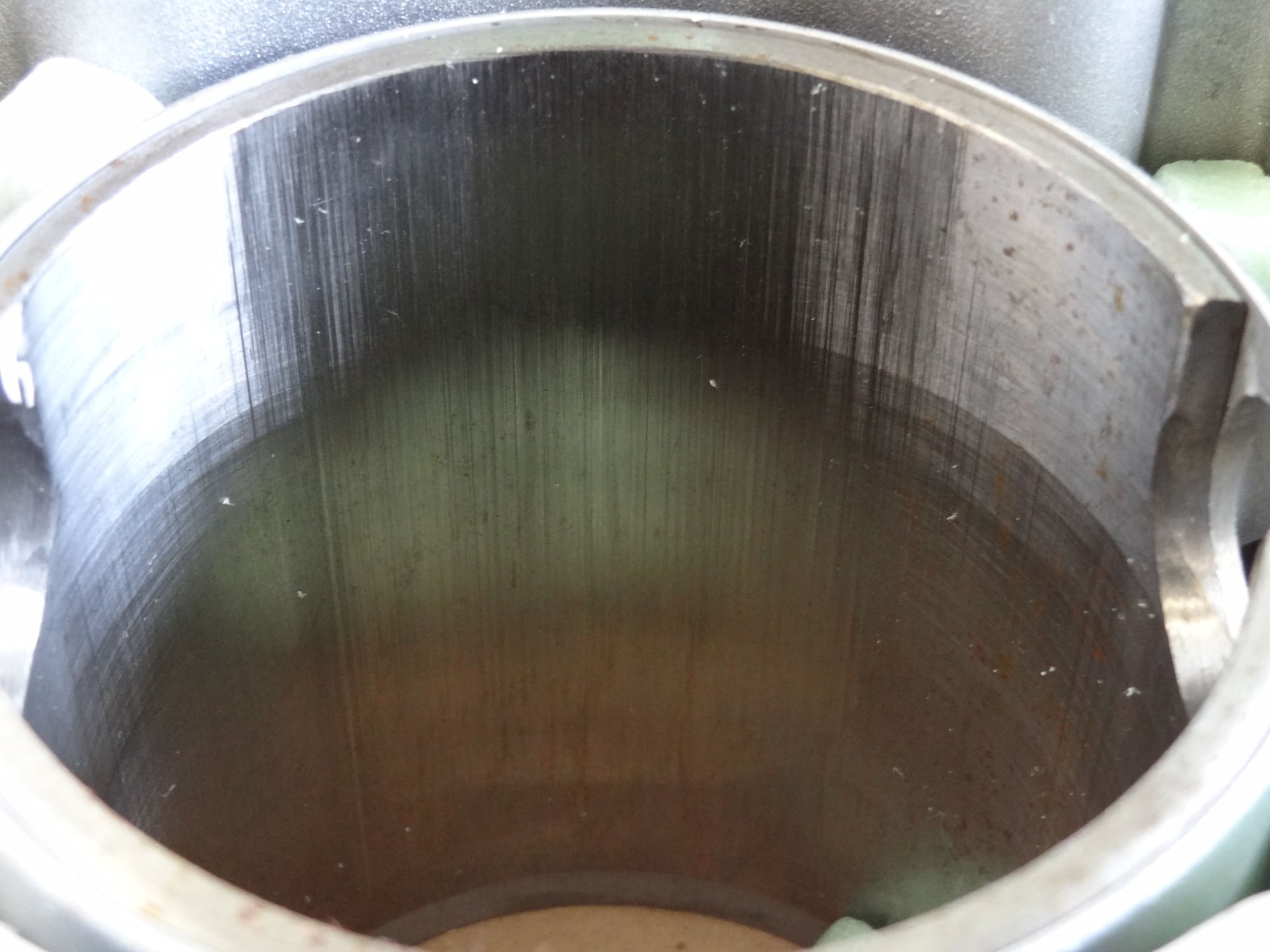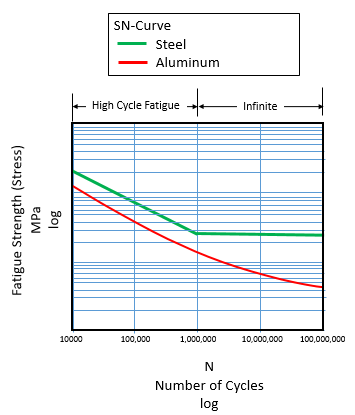Why do engines wear out?
#1
RL Community Team
Rennlist Member
Rennlist Member
Thread Starter
2009 C2S 130K miles
Seriously, why do engines wear out? The major internals are bathed in oil...... as I be schoold, any two parts will never touch if properly oiled.... that is the purpose of oil. Ok, sensors will fail.... plastic and rubber bits will crack.... but those are all replaceable. Jake in one of his vids, showed a used cylindar that looked brand new... as I have seen myself on high mileage engines... no lines at all.
Peace
Bruce in Philly
Seriously, why do engines wear out? The major internals are bathed in oil...... as I be schoold, any two parts will never touch if properly oiled.... that is the purpose of oil. Ok, sensors will fail.... plastic and rubber bits will crack.... but those are all replaceable. Jake in one of his vids, showed a used cylindar that looked brand new... as I have seen myself on high mileage engines... no lines at all.
Peace
Bruce in Philly
#4
Burning Brakes
Cold climate is hard on engines
#7
Engineered obsolescence so that stock holders can make even more money.
Yves
Yves
Trending Topics
#8
Former Vendor
2009 C2S 130K miles
Seriously, why do engines wear out? The major internals are bathed in oil...... as I be schoold, any two parts will never touch if properly oiled.... that is the purpose of oil. Ok, sensors will fail.... plastic and rubber bits will crack.... but those are all replaceable. Jake in one of his vids, showed a used cylindar that looked brand new... as I have seen myself on high mileage engines... no lines at all.
Peace
Bruce in Philly
Seriously, why do engines wear out? The major internals are bathed in oil...... as I be schoold, any two parts will never touch if properly oiled.... that is the purpose of oil. Ok, sensors will fail.... plastic and rubber bits will crack.... but those are all replaceable. Jake in one of his vids, showed a used cylindar that looked brand new... as I have seen myself on high mileage engines... no lines at all.
Peace
Bruce in Philly
These are 3 very hard, wear resistant materials, that when plated together and honed to a perfect roughness average will live a long life. My 88 Carrera has over 300,000 miles logged, and l still drive it every few days.
The main reason that engines wear out today, is because they are not designed to last forever. The envoironment is also a key player in this, from processes like Nikisil that are very harmful to the environment (and therefore expensive) to engine systems that are designed for reduced emissions.
l have a 1954 Chevy truck that my dad bought new. The 235CI straight six engine has never been rebuilt, and has over 1/2 million miles on it. It was designed to live a long, simple life, and it has done just that. It sat for 10 years, and after I filed the points, and cleaned the carburetor, it fired right up and has been running perfectly since. The days of simplicity and over- engineering are gone forever.
Everything mechanical will wear out, unless it fails during the process. Its a guarantee.
#9
when u mention iron sleeves here people go crazy and start ranting about 2 different metals and expansion rates..blah blah blah...but aluminum blocks with steel liners have bee used forever.. and are proven to last over 2 n 300k miles..
at least in the case of the m9x engines i think that will extend the life of them..
at least in the case of the m9x engines i think that will extend the life of them..
#10
Former Vendor
when u mention iron sleeves here people go crazy and start ranting about 2 different metals and expansion rates..blah blah blah...but aluminum blocks with steel liners have bee used forever.. and are proven to last over 2 n 300k miles..
at least in the case of the m9x engines i think that will extend the life of them..
at least in the case of the m9x engines i think that will extend the life of them..
The expansion issues are a different topic, as the accommodations made to overcome them require less than adequate cylinder to piston clearances. This usually makes for a noisy engine, and I have seen it also lead to safety retardation as the knock sensors pick up the noise, and back the ignition timing down.
re gener
How these sleeves are reacting with the coolant, the block alloy, and electrolysis is the big issue now. I have 3 engines here now that we can't reconstruct because the parent material of the block has been attacked by a very aggressive form of corrosion that has traits of exfoliation. The is occurring as a byproduct of the dissimilar materials being used. Another caveat is the sleeves are usually being press- fit into the block, and this is causing stress cracks as the parent material goes through thermal cycles. Adding to this is the coolant that is being ran, which is something else that the people using these have not worked to develop an answer for. Adding the steel to the recipe, changes the other ingredients.
Here's some examples. Note the steel bore saw the same scoring as we typically see with the standard M96 Lokasil bores. This is what happens when something is under- developed and thrown onto the market without years of evolution. I won't complain about iron bores with the M9X engines, they are keeping the line long, and they make a great economic stimulus. It just sucks to see a crankcase ruined to the point of no return.




#11

Plot of ultimate strength vs cyclic life span.
While a component can be properly designed for the constraints given to the engineer and the components assembled properly, stress will always be present on every part. Some experience higher stress and strain than others, yes. An interesting relationship can be seen from the plot of applied stress versus cyclic life span (in this case, two metals). Cyclic life span is the number of times that a load has been applied and removed from an element, this does not have to be fully reversible stress. As a component’s life span increases the maximum stress than can be withstood without failure decreases. You can see that for steel, this ultimate strength becomes a (relatively) constant value around 10^7 cycles. In contrast, aluminum will continue to have a lower and lower ultimate strength until failure occurs. For this reason steel can be considered a “high cycle life” material while aluminum is known to need replacing at some point during the life of the design. These are considerations that must be made by the engineers when weighing the requirements of the design, component performance or longevity?
#12
Rennlist Member

Plot of ultimate strength vs cyclic life span.
While a component can be properly designed for the constraints given to the engineer and the components assembled properly, stress will always be present on every part. Some experience higher stress and strain than others, yes. An interesting relationship can be seen from the plot of applied stress versus cyclic life span (in this case, two metals). Cyclic life span is the number of times that a load has been applied and removed from an element, this does not have to be fully reversible stress. As a component’s life span increases the maximum stress than can be withstood without failure decreases. You can see that for steel, this ultimate strength becomes a (relatively) constant value around 10^7 cycles. In contrast, aluminum will continue to have a lower and lower ultimate strength until failure occurs. For this reason steel can be considered a “high cycle life” material while aluminum is known to need replacing at some point during the life of the design. These are considerations that must be made by the engineers when weighing the requirements of the design, component performance or longevity?
#13
https://eclass.teicrete.gr/modules/d...ne-design-.pdf
Chapter 6 is fatigue failure. I don't recall which subchapter it is in but endurance strength is relevant to a component's life span and my previous post.
Something along the lines of:
Se = Se' * Ka * Kb * Kc * Kd * Ke
where Se' is 0.5 * Sut which is half of the ultimate strength of a known material and Ka through Ke are factors to adjust the endurance strength for things like the temperature of operation, machining method of the parts, geometry, types of applied loads.
#14

Plot of ultimate strength vs cyclic life span.
While a component can be properly designed for the constraints given to the engineer and the components assembled properly, stress will always be present on every part. Some experience higher stress and strain than others, yes. An interesting relationship can be seen from the plot of applied stress versus cyclic life span (in this case, two metals). Cyclic life span is the number of times that a load has been applied and removed from an element, this does not have to be fully reversible stress. As a component’s life span increases the maximum stress than can be withstood without failure decreases. You can see that for steel, this ultimate strength becomes a (relatively) constant value around 10^7 cycles. In contrast, aluminum will continue to have a lower and lower ultimate strength until failure occurs. For this reason steel can be considered a “high cycle life” material while aluminum is known to need replacing at some point during the life of the design. These are considerations that must be made by the engineers when weighing the requirements of the design, component performance or longevity?
#15
That is an interesting chart for mechanical stress cycling for those materials but of limited value in comparing materials for use in engines. Additional relevant data would be needed such as temperature cycling, chemical exposure ( e.g. water, oxygen. oil, coolant) as well as part design.
That should answer the question of why motors wear out. Additional factors do come into play and are not as well documented in their relationship to the expected life span when failure occurs.
Bore scoring is a surface defect that is the starting point for fatigue failure, creep and fracture propagation, which ends in what the forums call d chunk failure. Properly oiled components will prevent the chance of scoring and in turn, mitigate fatigue failure due to crack propagation.
One can ask why m97 motors wear out quicker than others (sometimes) and that’s a whole new question.

